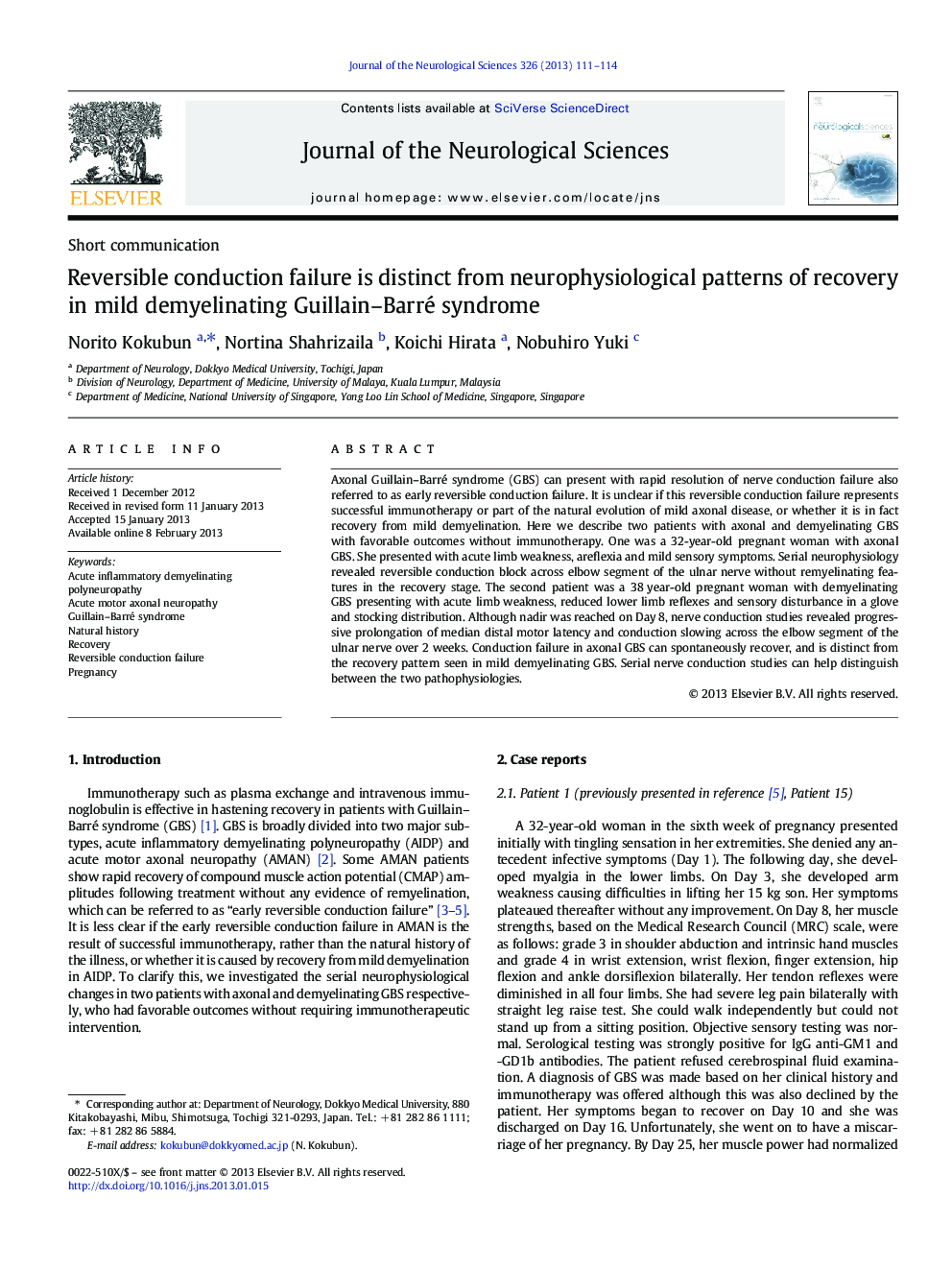| Article ID | Journal | Published Year | Pages | File Type |
|---|---|---|---|---|
| 1913870 | Journal of the Neurological Sciences | 2013 | 4 Pages |
Axonal Guillain–Barré syndrome (GBS) can present with rapid resolution of nerve conduction failure also referred to as early reversible conduction failure. It is unclear if this reversible conduction failure represents successful immunotherapy or part of the natural evolution of mild axonal disease, or whether it is in fact recovery from mild demyelination. Here we describe two patients with axonal and demyelinating GBS with favorable outcomes without immunotherapy. One was a 32-year-old pregnant woman with axonal GBS. She presented with acute limb weakness, areflexia and mild sensory symptoms. Serial neurophysiology revealed reversible conduction block across elbow segment of the ulnar nerve without remyelinating features in the recovery stage. The second patient was a 38 year-old pregnant woman with demyelinating GBS presenting with acute limb weakness, reduced lower limb reflexes and sensory disturbance in a glove and stocking distribution. Although nadir was reached on Day 8, nerve conduction studies revealed progressive prolongation of median distal motor latency and conduction slowing across the elbow segment of the ulnar nerve over 2 weeks. Conduction failure in axonal GBS can spontaneously recover, and is distinct from the recovery pattern seen in mild demyelinating GBS. Serial nerve conduction studies can help distinguish between the two pathophysiologies.
